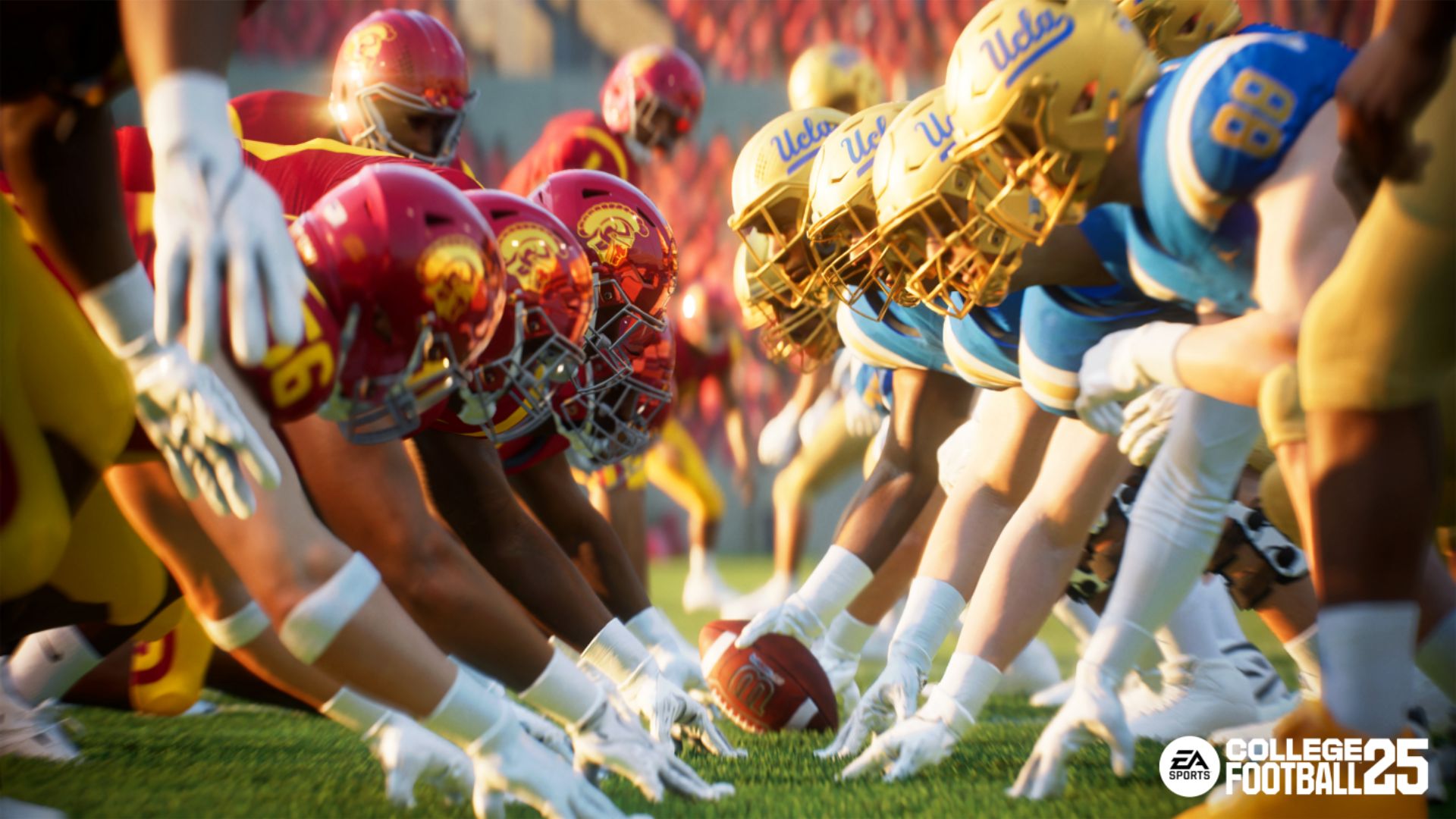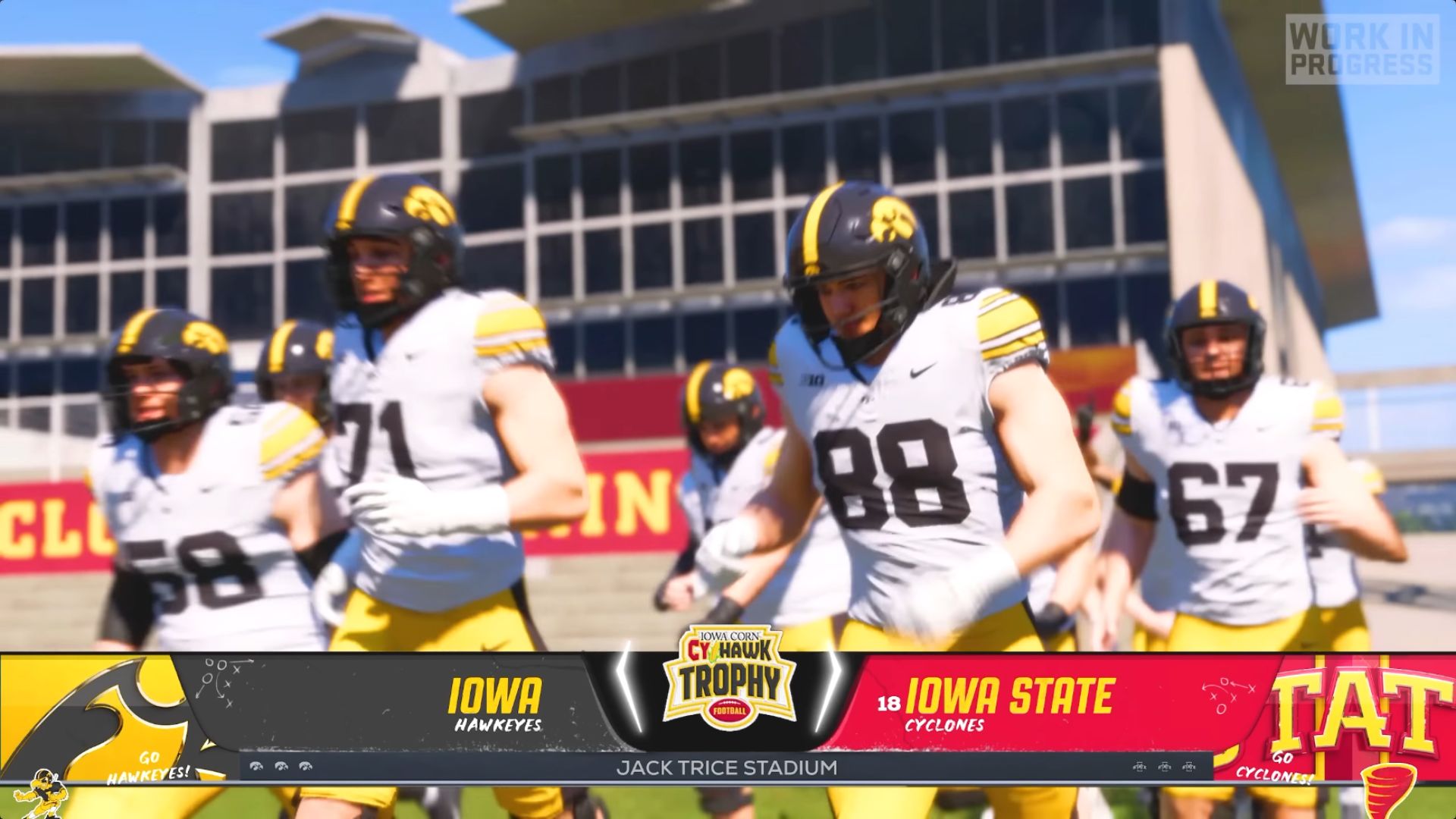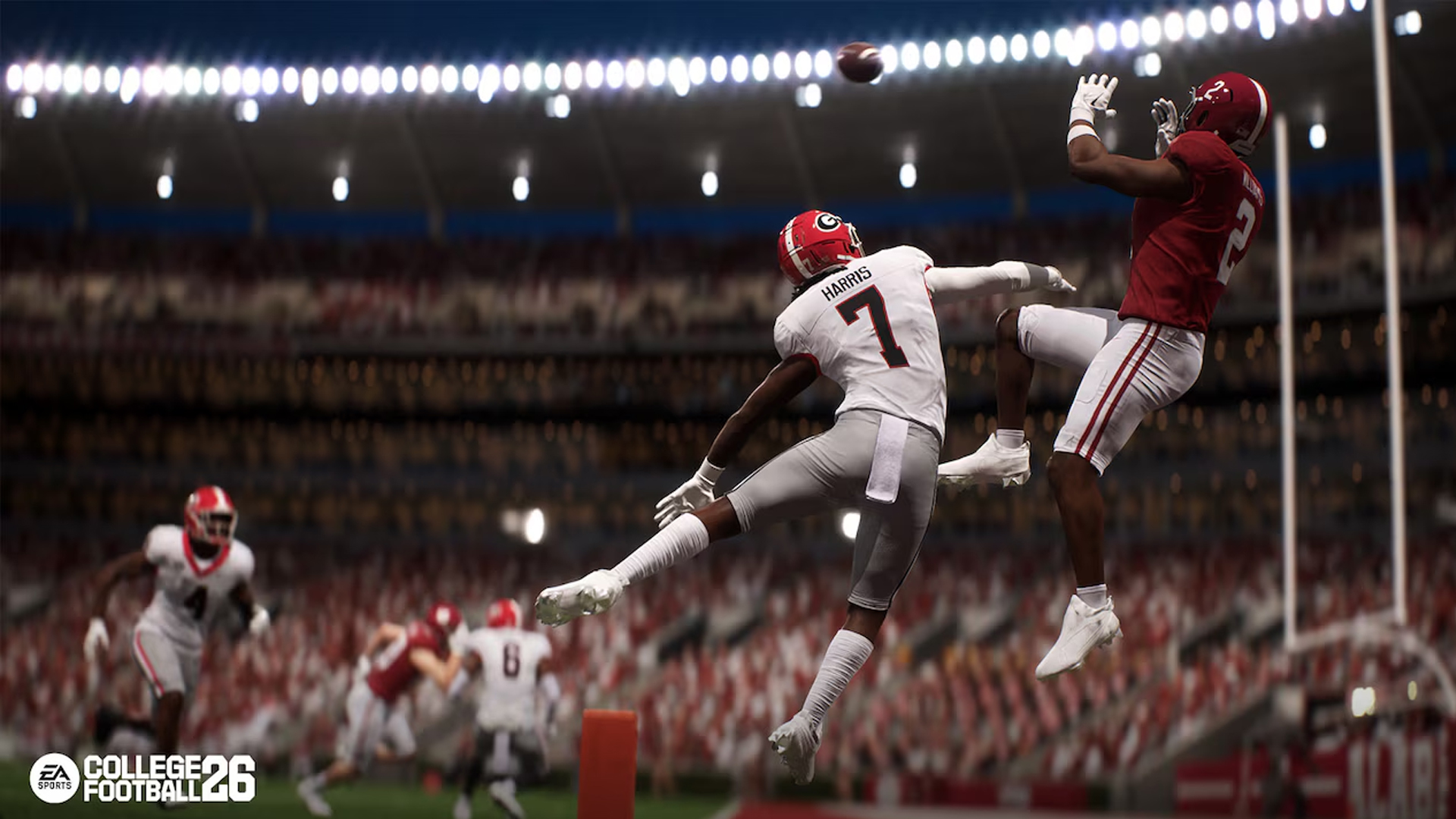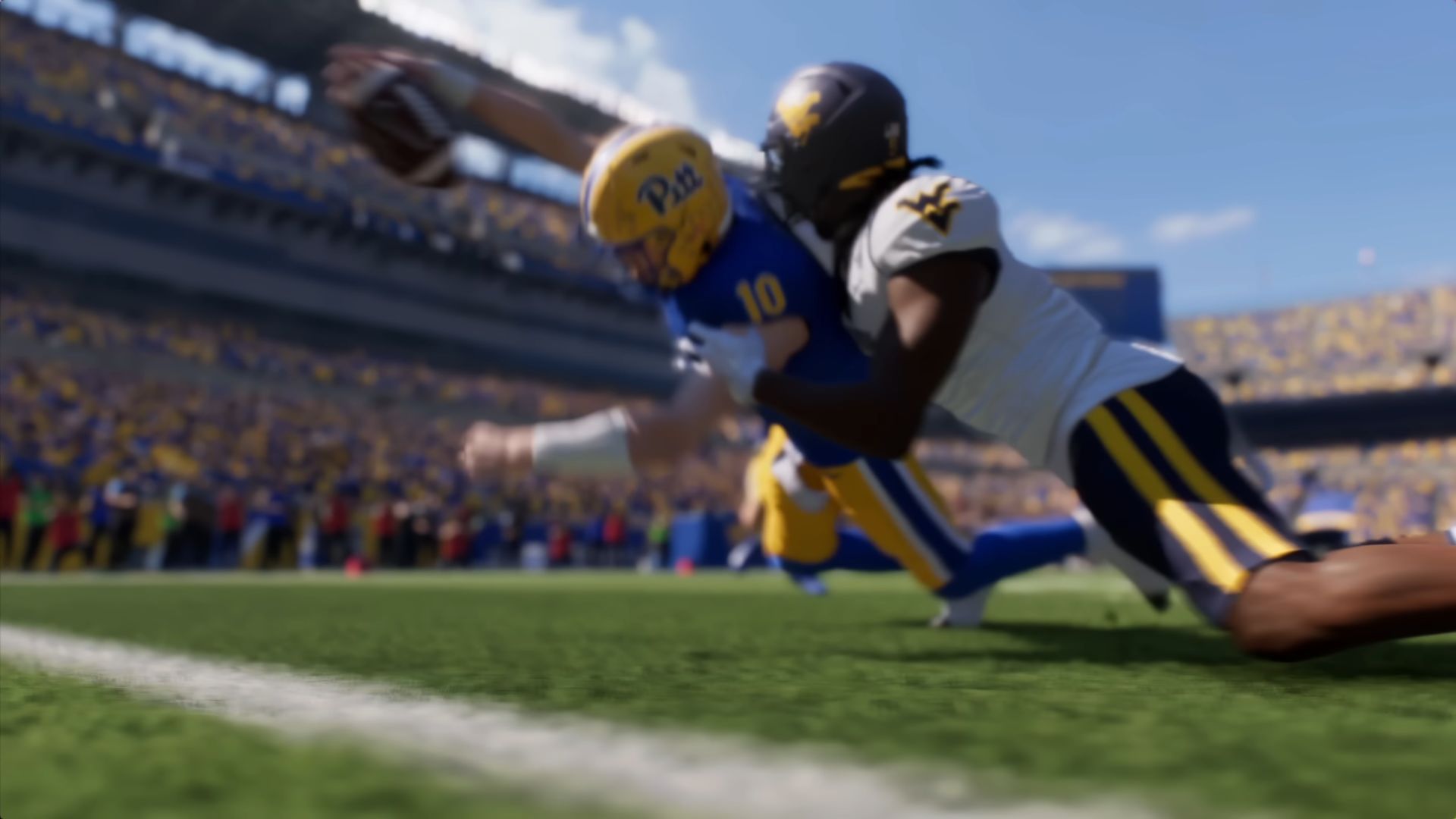Here is a complete list of all player stats in College Football 26 and what each one means for performance on the field.

College Football 26 is a pretty complex sports simulation with an immersive rendition of the collegiate level game, including stats and team building. With that said, there is a lot to unpack in the game. On top of the new and improved gameplay mechanics, it features a wide array of stats for each player that you need to consider when building a team.
That said, figuring out what each stat does can be overwhelming, especially if this is your first game in the series. To help you with that, here is a complete list of all stats in College Football 26 and what they actually do.
Also Read: College Football 26: Best Playbooks Explored
List of All College Football 26 Player Stats
College Football 26 features a total of seven main stat categories that define player performance: General, Receiver, Quarterback, Defense, Ball Carrier, Blocking, and Kicking. Each category includes a unique set of attributes that impact how players perform on the field, making them important to consider when building your roster or analyzing matchups.
Below is a complete list of all the stats and their corresponding categories in College Football 26:
General
| Abbreviation | Stat | Description |
| OVR | Overall | A player’s overall rating, in one figure. |
| INJ | Injury | Shows how a player is more likely to get injured. The lower the value, the higher the risk of getting hurt. |
| AGI | Agility | How quickly the player moves or dodges to avoid taking hits. |
| ACC | Acceleration | Determines how fast a player can reach top speed. |
| STA | Stamina | Shows how long the player can play before they get tired and need to rest. |
| STR | Strength | Affects how well a player can deliver or break through blocks, as well as execute powerful moves on the field. |
| TGH | Toughness | Determines how fast the player can recover from injury and get back to playing. |
| AWR | Awareness | Affects how quickly the player can make decisions in the field. |
| SPD | Speed | Determines how fast a player can run. |
Also Read: College Football 26: How To Truck
Receiver
| Abbreviation | Stat | Description |
| SRR | Short Route Running | Affects how effective a player is at running short routes in the field. |
| MRR | Medium Route Running | Affects how effective a player is at running medium routes in the field. |
| DRR | Deep Route Running | Affects how effective a player is at running deep routes in the field. |
| CTH | Catching | Determines how good a player is at catching a ball. |
| RLS | Release | Measures how fast a player initiates their route after the snap. |
| CIT | Catch in Traffic | Affects how good a player is at catching a ball while being covered by defenders. |
| SPC | Spectacular Catch | Affects a player’s ability to make difficult catches, such as one-handed grabs or receptions in tight coverage. |
Also Read: College Football 26: How To Throw Lob Pass
Quarterback
| Abbreviation | Stat | Description |
| SAC | Short Throw Accuracy | Affects how good a player is when doing short throw passes with a ball. |
| MAC | Medium Throw Accuracy | Affects how good a player is when doing medium throw passes with a ball. |
| DAC | Deep Throw Accuracy | Affects how good a player is when doing long-range throw passes with a ball. |
| THP | Throw Power | How far and how fast a player can throw a ball. |
| RUN | Throw on the Run | Affects how good a player is at passing a ball while running. |
| TUP | Throw Under Pressure | Reflects a player’s ability to throw accurately while under pressure, such as during a blitz or when the pocket is collapsing. |
| PAC | Play Action | Determines how a player is good at making plays and fooling defenders. |
| BSK | Break Sack | Represents the player’s skill at escaping sack attempts and shaking off defenders during pressure situations. |
Also Read: Does College Football 26 Have Crossplay or PC Support?
Defense
| Abbreviation | Stat | Description |
| ZCV | Zone Coverage | Affects how efficient a player is at covering a zone. |
| PUR | Pursuit | Measures a player’s ability to track the ball carrier’s movements, improving their chances of closing the gap and making a successful tackle. |
| TAK | Tackle | Affects the rate of success for a player to make a tackle. |
| FMV | Finesse Moves | This gauges how successful a defender is at using finesse techniques to beat offensive linemen. |
| BSH | Block Shedding | Affects a player’s ability at shedding blocks from offensive linesmen. |
| PRS | Press | Determines a player’s ability to delay a receiver from starting their route. |
| PRC | Play Recognition | Ability to read an opponent’s offensive plays before they execute them. |
| POW | Power | Determines how good a player is at making tackles or hits. |
| MCV | Man Coverage | Affects the ability of players to protect receivers. |
| PMV | Power Moves | Measures how well a defender can use power-based moves to break through the offensive line. |
Also Read: College Football 26: How To Perform a Pump Fake
Ball Carrier
| Abbreviation | Stat | Description |
| JMP | Jumping | Affects the jump height of a player while carrying a ball. |
| SPM | Spin Move | Measures how successful a player’s spin move is when trying to evade defenders. |
| BTK | Break Tackle | How effective a player is at breaking tackles and still keeping running with the ball. |
| CAR | Carrying | Determines how good a player is at rushing with a ball without fumbling. |
| BCV | Ball Carrier Vision | Affects how efficiently a player is at avoiding tackles and wiggle their way out of defensive lines. |
| SFA | Stiff Arm | Indicates how well a player can use the stiff arm to fend off approaching defenders. |
| JKM | Juke Move | Determines how good a player is at misdirection and forces opponents to run in the wrong direction. |
| TRK | Trucking | Affects how strong a player is when it comes to trucking moves when charging through defensive players. |
| COD | Change of Direction | Determines how quickly a player can switch directions while running with a ball. |
Also Read: College Football 26: Best Beginner Tips and Tricks
Blocking
| Abbreviation | Stat | Description |
| PBK | Pass Blocking | Affects how skilled a player is at blocking during passing plays. |
| IBK | Impact Blocking | Affects the rate at which a player wins a collision during a field blocking. |
| LBK | Lead Blocking | Indicates how effective a player is at executing pull blocks, especially when moving laterally to open running lanes. |
| RBP | Run Block Power | Affects how well a player performs during man-to-man blocking plays. |
| RBK | Run Blocking | Determines how good a player is at blocking during rushing plays. |
| PBP | Pass Block Power | Measures how effectively a player can counter a defender’s power-based block-shedding techniques. |
| RBF | Run Block Finesse | Determines how a player excels at blocking defenders during running plays. |
| PBF | Pass Block Finesse | Indicates a player’s ability to defend against finesse block-shedding moves during pass protection. |
Kicking
| Abbreviation | Stat | Description |
| KAC | Kick Accuracy | Affects how accurately a player can kick a ball. |
| KPW | Kick Power | Determines how powerful a player’s kick is and sends the ball flying far. |
| RET | Return | Affects how good a player is at returning the ball. |
Thank you for reading the article. We provide the latest news and create guides for Baldur’s Gate 3, Starfield, ARK Survival Ascended, and more. Also, watch Deltia play games on Twitch or visit his YouTube channel!
 Reddit
Reddit
 Email
Email


